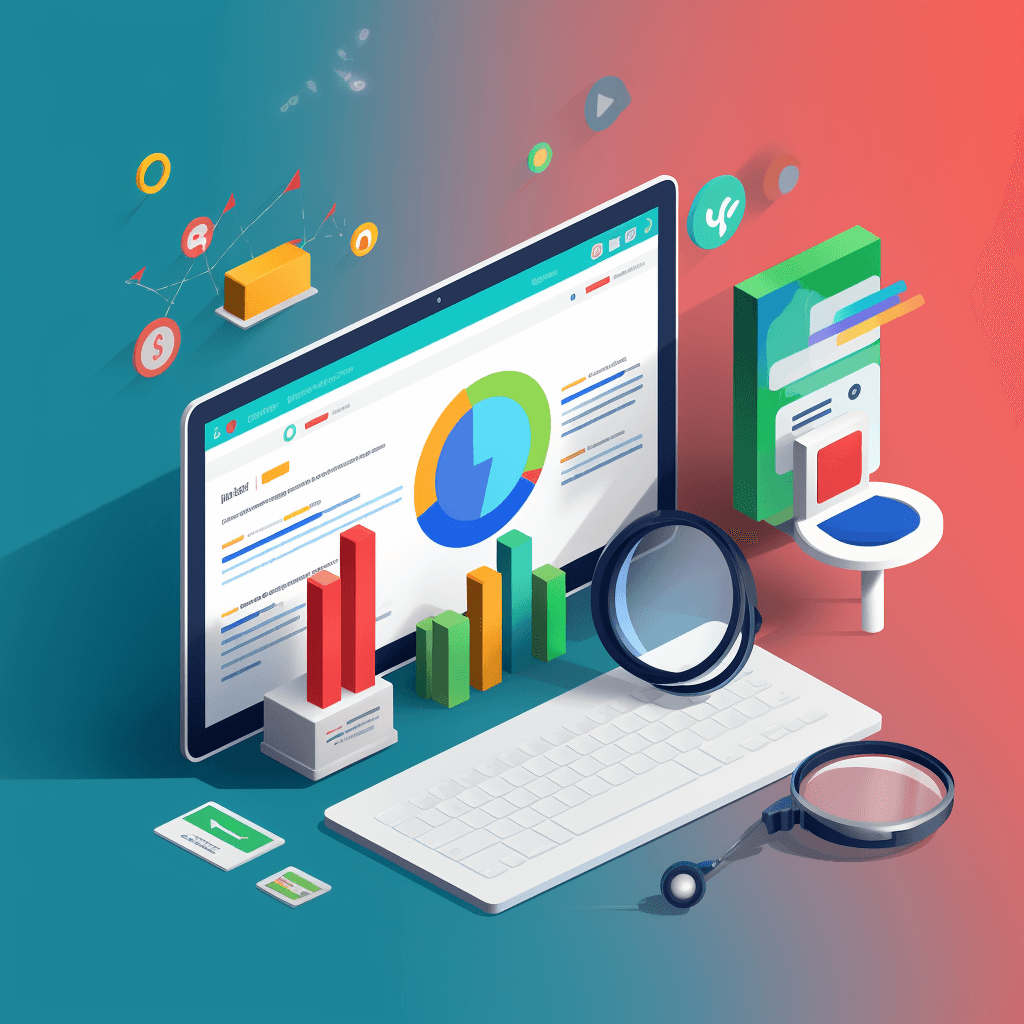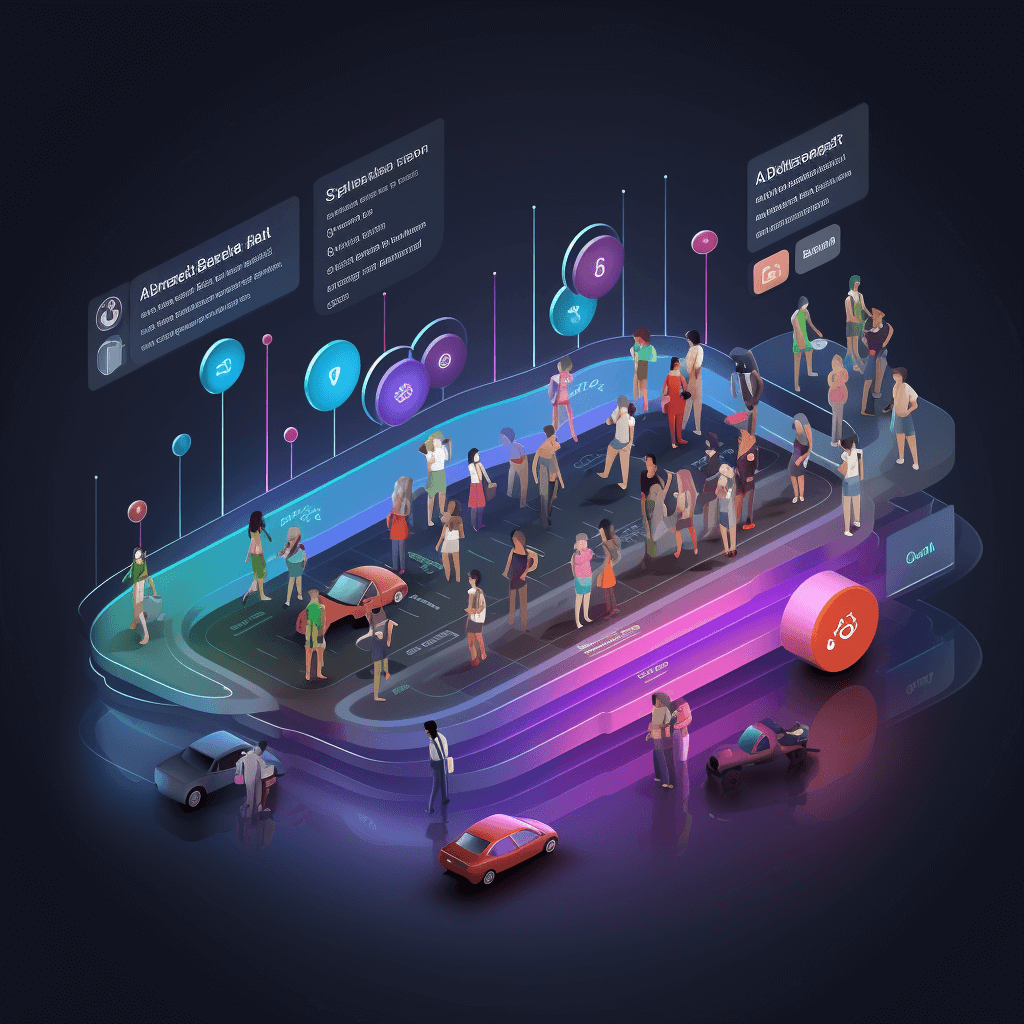Inbound marketing is a business methodology that attracts customers by creating valuable content and experiences tailored to them. Instead of pushing products or services onto potential customers, inbound marketing strategies focus on providing solutions to problems, thereby building trust and credibility for your brand. This customer-centric approach transforms strangers into potential customers, and then ultimately into promoters of your brand.
The heart of inbound marketing revolves around producing and sharing compelling content through various channels such as blogs, social media, email newsletters, search engines, and more. By creating content that aligns with your customer’s needs and interests, you attract inbound traffic that you can then convert, close, and delight over time. Interactive tools like call-to-actions (CTAs), landing pages, and forms are commonly used in inbound marketing to capture leads, while personalized emails, retargeting, and automation help nurture these leads into loyal customers.
Inbound Marketing vs Outbound Marketing
The fundamental distinction between Inbound and Outbound Marketing lies in their approach and the way they interact with their target audience. Inbound Marketing is a modern marketing methodology that draws customers in by creating valuable content and experiences tailored to them. It involves strategies like content marketing, blogs, events, Search engine optimization (SEO), social media, among others to create brand awareness and attract new business. Instead of interrupting customers with disparate ads, Inbound Marketing aims to spread core messages in a non-intrusive, organic manner, seeking to engage customers on a deeper level.
On the other hand, Outbound Marketing is a more traditional form of marketing where a company initiates the conversation and sends its message out to an audience. It encompasses activities like cold calling, direct mail, radio ads, television ads, trade shows and telemarketing. Here, the focus is primarily on seeking out consumers, often interrupting their daily activities, and directly reaching out to them in order to sell the product or service. The aim of outbound marketing is to disseminate marketing messages to as many people as possible hoping that the message resonates with some, who would then become potential customers.
Benefits of Inbound Marketing
Inbound marketing offers numerous benefits to businesses looking to build strong customer relationships and increase their bottom line. This strategy focuses on attracting customers organically through valuable content instead of pushing products or services onto them. This approach not only leads to a positive customer experience, but it also helps establish credibility and trust. Once a brand is seen as a trusted resource, it’s more likely to attract customers who are loyal and more likely to make repeat purchases.
Further, inbound marketing is cost-effective compared to traditional marketing. It doesn’t require a substantial budget to create and share high-quality content and the conversion rates are typically higher. It’s also easily trackable, allowing you to immediately identify what’s working and what isn’t, and then tweak your strategy accordingly. This kind of agility is core to staying competitive in the ever-evolving digital landscape. Therefore, inbound marketing is not just a strategy, but a long-term investment for your brand’s future.
Reduced Expense
Owning a business, regardless of its size, requires a careful analysis of costs and expenses. Recently, due to strategic adjustments, our organization has managed to reduce its expenses by 3.1%. This reduction has been achieved through various means such as cost optimization, efficient resource utilization, and an overall enhancement of operational efficiencies within the organization.
This 3.1% reduction in expenses means a significant increase in the profitability of the company, allowing us to reinvest in growth initiatives, enhance shareholder value, and build a significant cash reserve for future investments or unforeseen contingencies. This measure also illustrates our commitment to fiscal responsibility and contributes to the financial health of the company, ensuring our competitiveness in a challenging market landscape.
Higher Trust and Credibility
In today’s digital world, the significance of trust and credibility cannot be overstated. An impressive level of higher trust and credibility degree sets businesses apart from their competitors. With escalating concerns of data privacy, infrastructural security, and operational integrity, consumers are becoming more cautious in their choices. A strong reputation for trustworthiness can be a pivotal point for businesses, allowing them to build loyal customer bases and stronger partnerships.
Transparency in business operations, high-quality products and services, excellent customer service, positive customer testimonials, and industry accreditations can all contribute to the level of trust and credibility of businesses. Providing the level of higher trust and credibility not only instills confidence in customers but also enhances the business’s reputation and position in the marketplace. When trust and credibility are fostered, businesses are set on a path of sustainable growth and prosperity.
Quality Traffic and Leads
Businesses today are increasingly turning to the digital landscape to grow and succeed. In this context, the importance of quality traffic and leads cannot be overemphasized. The term quality traffic and leads not only reflect the number of visitors coming to your website but also focuses on the quality and relevance of those visitors. It emphasizes capturing leads that have a high potential of conversion, ensuring that your digital marketing efforts are targeted and effective.
Generating quality traffic and leads involves strategic planning and execution. It includes utilizing robust SEO techniques, engaging content, effective use of social media, and other digital marketing strategies. Not only does it help increase your website’s visibility and rank on search engines, but it also helps attract relevant traffic. In turn, this increases the chances of turning those leads into loyal customers, ensuring sustained growth and profitability for your business.
Opportunity to Learn and Evolve
In the journey towards personal and professional development, the most important aspect is the opportunity to learn and evolve. The constant evolution in our surroundings, technology, and methodologies encourages us to incessantly equip ourselves with new skills and perspectives. Every hurdle we encounter presents this opportunity to learn, to adapt, and to become better. Be it an organizational atmosphere or life in general, the path to growth necessitates a continuous learning attitude.
Opportunity to Learn and Evolve stands for the importance of perpetually expanding our knowledge and skills. This principle is applicable to individuals, businesses, and institutions alike. In the business world, learning empowers a company to stay competitive by innovating and adopting new strategies. On a personal level, it encourages intellectual and emotional growth, character development, and resilience to changes. Embrace the opportunity to learn and evolve – it is inherently a process of progressing, bettering, and achieving success in any sphere of life.
Stages of an Inbound Marketing Strategy
In an effective inbound marketing strategy, the journey starts with drawing customers in. This could be accomplished via various channels like content marketing, blogging, social media, and search engine optimization (SEO). The target here is to create awareness and draw attention to your brand in a way that attracts prospective customers to your website or landing pages. Once you have succeeded in attracting these prospects, the next step is to convert them into leads. This is achieved by providing useful content or offers that are worth exchanging their contact information for.
Beyond acquisition, an effective inbound marketing strategy also involves customer engagement and retention. After converting leads, the strategy shifts towards closing sales through techniques like email marketing, CRM systems, and other lead nurturing strategies. This stage involves persuading your leads to become customers. The final stage is the delight stage, where you keep your customers satisfied with amazing services or products and follow-up content, which can turn customers into promoters who can further spread the word about your company. Thus, attracting new leads becomes a continuous cycle fuelled by your loyal customers.
The Attraction Stage
The Attraction Stage is often considered to be the initial phase of any relationship, where individuals are drawn to each other based on a variety of factors such as physical appearance, similarity in interests, the alignment of values, or even the mystery that surrounds a person. This analysis, however subjective it may seem, happens almost instinctively, triggering a release of certain hormones that influence feelings of attraction and interest.
This stage is defined by excitement, intrigue and a strong desire to know the other person better. Powerful emotions like infatuation and admiration fuel the attraction, often blurring rational judgment and awareness. However, while it can be all-consuming and heady, it’s also an essential stage in relationship-building. As the first step, it shapes the dynamics that might eventually evolve into deeper emotional bonds or friendship. Understanding and recognizing this stage is crucial to navigate the complexities of interpersonal relationships.
Content Creation
In the digital age, the production of high-quality, relevant, and engaging content is a critical element of any successful marketing strategy. Known as Content this marketing approach focuses on creating content with the intent of attracting, informing, and interacting with the targeted audience. The key to effective content creation is understanding the audience’s needs and producing content that meets those needs.
Importantly, Content goes beyond just stuffing keywords into articles or blog posts. It encompasses a wide range of content types, including infographics, videos, podcasts, social media posts, and webinars. Each type of content is designed to convey essential information in the most impactful way possible, engage with the audience, encourage feedback, and eventually drive more traffic or conversions. By consistently producing high-quality content, businesses can establish their brand as a reliable source of information and, consequently, grow their online presence and customer base.
Social Media
In the world we live in today, Social Media has become a pivotal part of society. platforms such as Facebook, Twitter, Instagram and LinkedIn are used by billions of people worldwide. These platforms are not only used for personal communication and entertainment but have also become key tools for business and marketing, news dissemination, and even education. With the click of a button, information can be shared to anywhere in the world in a matter of seconds.
Regardless of the immense benefits, Social Media also has its drawbacks. Fake news and misinformation spread like wildfire. Cyberbullying and online harassment have become rampant, posing significant concerns around mental health. It’s also worthy to note the degree to which social media impacts productivity and personal privacy. Thus, while it is an undeniable part of our daily lives, it is important to use social media consciously and responsibly.
Converting Visitors into Leads
Converting website visitors into leads is an essential part of any online business strategy. It’s not just about attracting a high volume of traffic; the key is to attract the right kind of traffic. That means visitors who are interested in your products or services and are likely to become customers. This process involves two main steps: attracting the right visitors, and then convincing those visitors to take the next step and become leads.
The first step is to use targeted marketing strategies to attract the right visitors to your site. This can involve many different tactics, from search engine optimization to ensure that your site is appearing in search results for relevant keywords, to social media marketing and content marketing to attract users who are interested in your industry. Once you have these visitors on your site, the next step is to convince them to take an action that turns them into a lead. This could involve signing up for a newsletter, filling out a contact form, or making a purchase. To encourage these actions, it’s important to provide valuable and engaging content, show social proof like testimonials or reviews, and use effective calls-to-action.
Landing Pages
Landing pages are indispensable in any online marketing campaign. They function as a bridge that connects your audience with your business, helping turn site visitors into leads or customers. Specifically, a landing page is meant to be straightforward, efficient, and effective in achieving a singular conversion goal. It should engage the audience, clearly articulate the benefits or value proposition, and prompt an action, which could vary from signing up for a newsletter, making a purchase, downloading a software, or filling out a form.
The concept behind a landing page is to minimize distractions and help visitors focus on the intended action. The represents having minimum elements on the page, ideally one headline, one subheading, one image, and one call-to-action. The stands for two points of explanation or persuasion, generally elaborating on the features and benefits. The signifies one single focus – your conversion goal. When crafting a landing page, it’s important to make it simple and straightforward with compelling content and visuals. Engage the visitor immediately, ensure the offer or value proposition is clearly understood, and make the action you want to take obvious. This enhances the user experience, prompting higher conversion rates.
Opt-in Forms
Opt-in forms are an essential tool for any online business seeking to collect information from its users. They provide a legitimate way to gather data, often used for mailing lists, registration, or online purchases. An opt-in form essentially offers users an opportunity to say “yes, you have my permission to contact me.” Compliance with laws such as GDPR makes using opt-in forms crucial.
Design and placement of the opt-in form can significantly influence the rate at which users choose to provide their information. Users are more likely to fill out a form that is presented in a visually appealing and easily accessible manner. Best practices for opt-in form design include clearly stating what the user will receive in return for opting in, being clear and concise with form fields requiring minimal user effort, and using engaging action words for the call-to-action button.
Nurturing Leads into Customers
Successfully transforming leads into customers is vital in business, and often regarded as an art within itself. The nurturing process involves making a connection, establishing trust, and providing value to prospects until they’re ready to make a purchase. This nurturing process is often characterized as a journey or a funnel, where leads enter and eventually convert to customers at the end.
Achieving a rating in lead nurturing implies that the strategies and tactics implemented have resulted in positive results. The use of relevant and personalized content, consistent and persuasive communication, and long-term relationship building efforts may be significant factors in achieving this performance rating. While such a rating is commendable, it’s always critical to keep enhancing the lead nurturing practices for continuous improvement, as nurturing complex leads into paying customers requires persistence, patience, and sophisticated strategies.
Email Marketing
Email marketing is an integral part of most digital marketing strategies due to its effectiveness and high return on investment. In a email marketing strategy, businesses plan, develop, and execute a detailed and structured email campaign tailored towards promoting their products or services, nurturing leads, and retaining customers. This approach aims to increase brand visibility, build brand loyalty, and drive sales while providing valuable content to recipients.
The represents a specific formula for sending emails–for every 8 emails you send, should be educational and informative, offering useful and non-salesy content. The next emails must soft sell by providing information about a product or service in a persuasive but not forcefully selling manner. Finally, the last email, the is a hard sell, a serious sales pitch designed to close a deal or make a sale. This balanced strategy maximizes engagement and conversions while maintaining customer trust.
CRM and Marketing Automation
The concept of Customer Relationship Management (CRM) and Marketing Automation has become an essential part of a successful business strategy in the digital era. CRM and Marketing Automation is where innovation meets ingenuity, focusing on improving the relationship with existing customers, finding new prospective customers, and bringing back former customers. These systems compile data from a range of different communication channels, including a company’s website, telephone, email, live chat, marketing materials, and social media.
Marketing automation, a subset of CRM, refers to the software that exists with the goal of automating marketing actions. This technology nurtures leads with personalized content and converts them into loyal customers, thus helping companies to streamline their lead generation, segmentation, lead nurturing and lead scoring, customer lifecycle marketing, cross-sell and up-sell, customer retention, and marketing ROI measurement processes. By integrating CRM and marketing automation, companies are not only able to manage interactions with their customers more effectively but also promote their product or service in a more organized and targeted manner.
The Delight Stage
The Delight Stage is a crucial step in the customer journey is overlooked or underestimated. It’s the point where your customer relationship can taken to the next level. Essentially, this is where your customer has used your product or service, and you continue to nurture the relationship, exceeding their expectations and creating memorable experiences that inspire loyalty. This stage cannot rushed; instead, it requires consistency and a deep understanding of your customer’s needs and desires.
The Delight Stage can take on varying forms depending on the nature of your business. It could be through after-sales service, exclusive bonuses, customer loyalty programs, or simply by consistently delivering outstanding service. Whatever form it takes, its goal is to make customers so happy and satisfied that they not only continue to do business with you, but also become advocates for your brand. In the highly competitive world of business, mastering the Delight Stage can give you a significant edge, turning customers into powerful allies that help fuel your growth.
Live Events and Webinars
In an increasingly digital world, live events and webinars are tools that businesses can leverage to interact with their audience and provide value-added services. Some of these include launching new products, sharing industry knowledge, providing demonstrations, and creating a forum for live Q&A sessions. With the advancements in technology, businesses are choosing live events and webinars as a part of their marketing strategies, realizing the benefits of reaching a broader audience, fostering customer engagement, and creating brand awareness.
Live events and webinars play a crucial role in overall marketing campaigns. They bring personal interaction to digital spaces, making it a powerful tool in building better customer relationships. Webinars, in particular, offer a flexible, interactive platform that can easily cover various topics, present new products or services, and even serve as a platform for continuing education. By approaching these online events strategically and professionally, businesses can create an excellent opportunity to expand their reach and ensure efficient lead generation.
Customer Support
Customer Support refers to an upgraded version of customer service that ensures a seamless experience for all users. With the prevalence of rapid digital transformation, this updated customer support system aims to solve user issues more efficiently and effectively. The focus is to minimize hold times and resolve queries in the least number of interactions.
The crux of Customer Support lies in its commitment to active listening, swift response, and expedited resolution. Promptly acknowledging and addressing customer concerns instills a sense of trust and reliability. In the competitive business landscape, an improved customer support system plays a vital role in enhancing customer loyalty and elevates a company’s brand image significantly.
Social Listening
Social Listening, termed as in our resource module, refers to the practice of monitoring digital conversations and interactions to understand what customers or potential customers are saying about a brand, its competitors, or its industry online. It is crucial for understanding consumer sentiment, enabling businesses to respond to concerns, questions, and praises in real time. Social listening goes beyond just looking at the numbers or monitoring keywords; it’s about analyzing the mood behind the data and understanding what prompted those conversations in the first place.
Implementing social listening strategies allows enterprises to gather insightful information about their target audience’s preferences and behaviors. This data can then used to make informed marketing decisions, enhance user engagement, or even product development. Moreover, by paying attention to social conversations, businesses can turn negative experiences into positive ones and cultivate customer loyalty. Therefore, social listening is a vital tool for success in the era of social media and digital business.
Implementing Inbound Marketing in Your Business
Inbound marketing has become an essential strategy for businesses looking to attract, engage, and delight customers. Unlike traditional marketing methods which rely on direct, outward-bound promotions, inbound marketing focuses on creating quality content that pulls people towards your company and products. It’s about creating and sharing valuable content tailored to appeal to your potential customers, drawing them into your company’s ambit in a way that feels natural and welcome rather than intrusive.
To begin with, businesses need to understand their target audience and create buyer personas. This will guide your content creation to ensure that it is relevant and appealing to your intended audience. Furthermore, implementing SEO strategies will help your business stand out in search engine results, attracting potential clients to your site.
A strong social media presence will also boost your inbound marketing efforts by directly engaging with your followers. Allowing for two-way communication, answering queries and responding to comments, encourages a level of interaction that can build stronger customer relationships.
Moreover, having a blog on your website promotes content marketing – writing about topics that are related to your business or industry can attract readers who may potentially convert into customers.
Finally, sending personalized, targeted emails is another excellent way to keep your prospective clients engaged and encourage them to choose your products or services.







